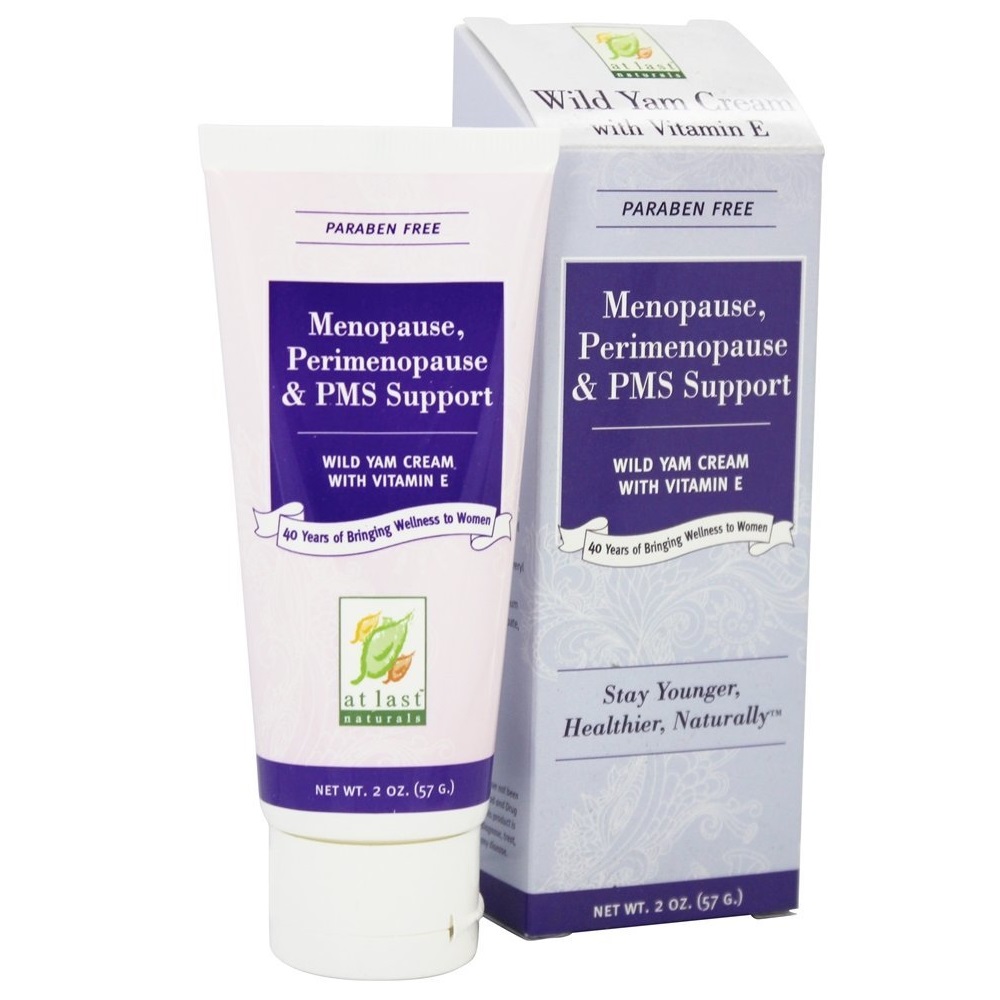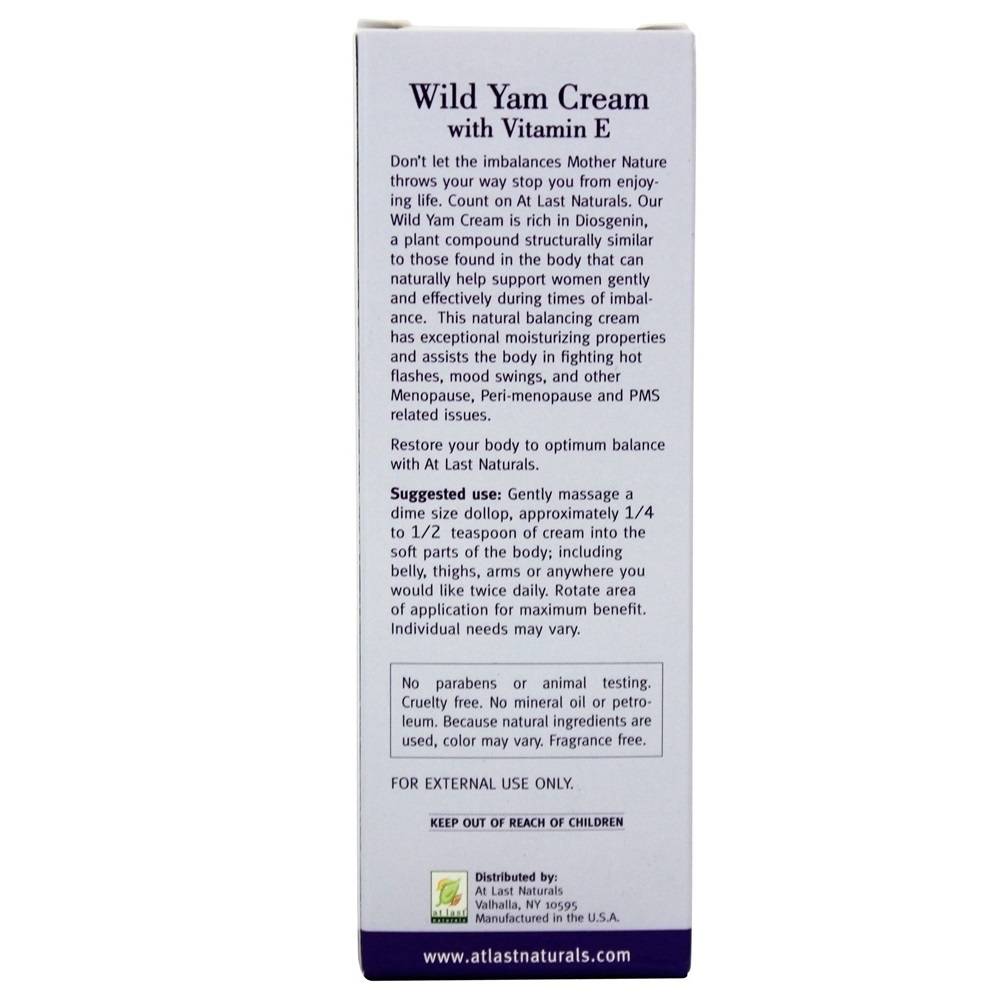Ingredients
- Click on any Ingredient below to learn more about it at NutraWiki
| Wild Yam Extract | There are over 600 species of wild yam. Some species are grown specifically as a source of diosgenin for laboratories to use in making steroids. These species are generally not eaten due to a bitter flavor. Only about 12 of the 600 species are considered edible. |
|---|---|
| Aloe Barbadensis Leaf Juice | Aloe Barbadensis leaf juice can soothe skin and serve as an anti-inflammatory. It can be efficiently used topically, because of its burn healing effects, scar reducing and wounds healing properties. |
| Soybean Oil | Soybean oil works to lower cholesterol levels by decreasing cholesterol absorption in the gut. Specific processed parts of soybean oil called unsaponifiables may have a beneficial effect on joints. |
| Stearic Acid (Vegetable Derived) | Stearic acid is one of many fatty acids that occur naturally in various plants and animal derivatives. |
| Cetyl Alcohol | Cetyl alcohol is used in the cosmetic industry as an opacifier in shampoos, or as an emollient, emulsifier or thickening agent in the manufacture of skin creams and lotions. It is also employed as a lubricant for nuts and bolts, and is the active ingredient in some “liquid pool covers” (forming a surface layer to reduce evaporation and retain heat). |
| Glycerin | Glycerin is what is called a humectant. Glycerin helps maintain the skin’s water balance on an intercellular level. Glycerin in lotions or other skin care products can help prevent or combat dry skin. |
| Phenoxyethanol | Phenoxyethanol is chemical preservative which is used in many applications such as cosmetics, vaccines and pharmaceuticals. |
| Tocophereryl Acetate | It is used in a variety of cosmetic and personal care products, including lipstick, eye shadow, blushers, face powders and foundations, moisturizers, skin care products, bath soaps and detergents, and hair conditioners. |
| Ascorbic Acid | Ascorbic acid known as Vitamin C is used to prevent or treat low levels of vitamin C in people who do not get enough of the vitamin from their diets. |
| Potassium Sorbate | Potassium sorbate’s use as an antimicrobial preservative prevents the growth of mold, bacteria and fungi in cheese, dried meats, baked goods, jellies and syrups. |
| Sodium benzoate | Used chiefly as a food preservative and anti-fungal agent, and in diagnostic tests of liver function. |
| Sorbic Acid | Sorbic acid is a natural compound that is also made synthetically. First isolated from berries in the 1800s, it became commercially available for use as a food preservative in the 1940s and 1950s.. Due to its antimicrobial properties, it’s added to a variety of foods to preserve freshness. |




Reviews
There are no reviews yet.